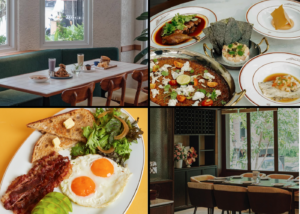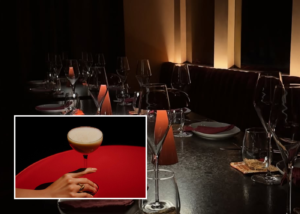What are QSRs?
A quick service restaurant (QSR), or fast food restaurant, is a specific type of restaurant that serves fast food and has minimal table service. Typically, these QSRS are part of a franchise operation that provides and supplies standardised ingredients and partially prepared foods through their own controlled supply channels. Examples of a QSR are McDonalds, KFC, and Jollibee. All offer a limited menu, all food is cooked in bulk in advance and kept hot, all all usually follow the ‘meat-sweet diet’ (high intake of red meat, sweets, and high-sugar drinks).
How did they react during COVID-19?
QSRs around the world reacted differently, they closed entirely, operated on a limited basis, only offered pickup, delivery, or drive through, or a combination of these. Even those QSRs that remained open, business inevitably dropped off. So what did these QSRs do? They ‘navitaged the present’ to align on short-term priorities before shaping the ‘new normal’ for long-term considerations.
Navigating the Present: All-in on online channels
Many QSRs, including favourites such as McDonalds and Jollibee, developed their own online-ordering mobile apps. As third party delivery platforms, such as GrabFood and Uber Eats, typically take 25 to 30 percent of each value of transaction, and with QSRs already having a relatively inexpensive dining experience, many QSRs found it was easier to not only expand their own delivery fleet but also maintain customer loyalty (and data!) directly rather than through a third party platform. Thir proved a smart move for Jollibee, as investment in their digital space and delivery platforms increased the Philippines’ largest fast-food company’s profit by a whopping 15% per year by the start of 2022. QSRs that didn’t have their own delivery app ready partnered with third party delivery providers and, due to their market power, negotiated lower commission rates.
The New Normal: Digital is the Future
As some essence of day-to-day operations returns for QSRs, they must prepare for the changing in consumer behaviour, as it will shape the industry’s resurgence into the ‘next normal’. What will the QSRs of the future placing their bets on?
Total Contactless Delivery
Delivery by drones, autonomous vehicles, and robots will all be part of a QSRs delivery fleet. The deployment of automated delivery technologies will be within the market in two to three years, with 37% of QSRs stating that for success to occur, technological advancements are critical in the industry. We are already seeing Domino’s partner with Nuro, a robotic vehicle, to deliver pizzas.
Demand for a Digital Experience
QSRs are in a competitive landscape moving forward, with technology being a core subset of their business, it would be no surprise that consumers will move this way too, preferring to order online than in-store or drive-through. With an abundance of QSRs already having their own delivery app, it would be increasingly likely that loyalty programs will be more common to increase the stickiness of customers.
Delivery App Management
Finally, the last important piece — an absolute must-have these days — is how QSR business intended to manage online food delivery sales. Without proper POS integration, even having just one brand on delivery means an additional 2 to 3 devices inside the kitchen — distracting staff, causing chaos and generally impacting the overall experience. This is further complicated if QSRs decide to run a ghost kitchen or produce virtual brands for additional income. With multiple delivery brands out of a single location, current technology infrastructure, including POSs, are not able to deal well with this future.
Fortunately, that’s why klikit exists. We’re a one-stop software solution for F&B looking to digitize their offerings, especially in the ever-popular food delivery, and can help you manage multiple brands, locations and sales channels from just a single device.
Contact us today to experience why restaurants love klikit!




